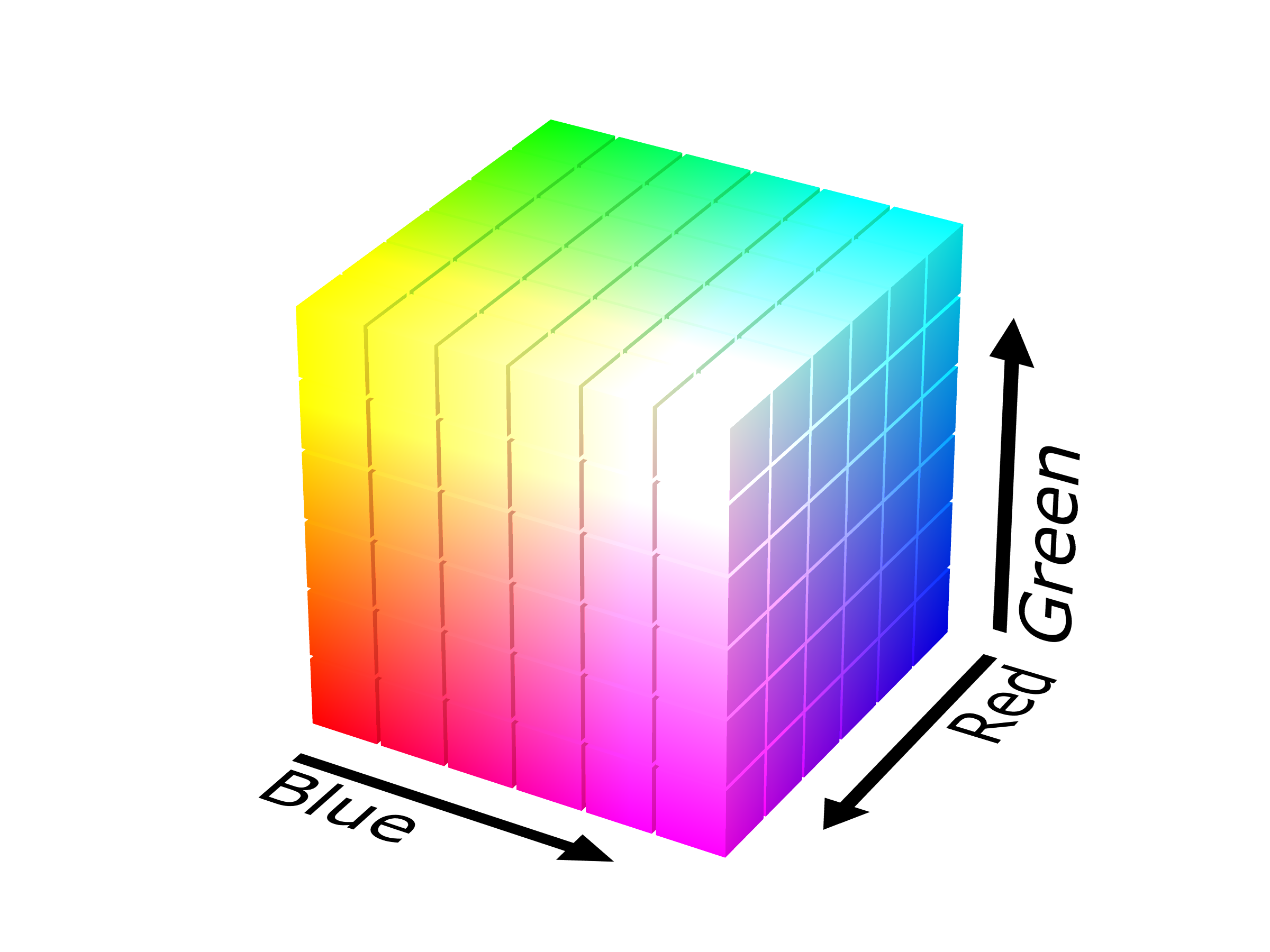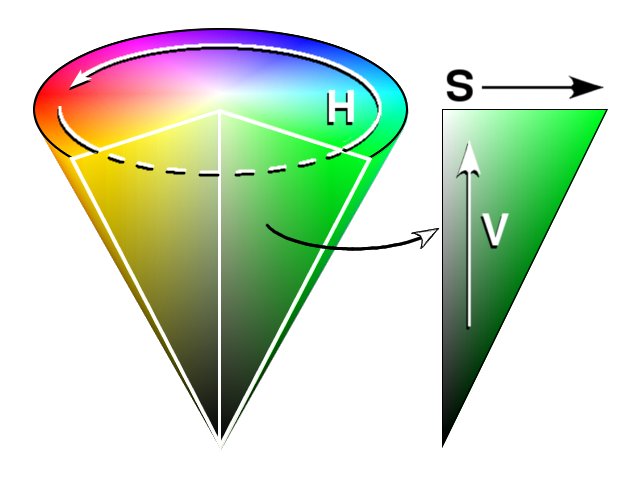Colour Coding
Hue-Saturation-Value (HSV)
Hans Georg Schaathun
NTNU, Noregs Teknisk-Naturvitskaplege Universitet
September 2023
RGB (Red/Green/Blue)

By SharkD - Own work Source-code available at the POV-Ray Object Collection., CC BY-SA 4.0
0% green
50% green
100% green
HSV (Hue/Saturation/Value)
Aka. HSB (Hue/Saturation/Brightness)

By Wapcaplet - From en wiki, CC BY-SA 3.0
Value is 100%.
Saturation is 100%.
- RGB $$\vec{c} \in [0,1]^3\subset\mathbb{R}^3$$
- HSV $$\vec{c}' \in \frac{\mathbb{R}}{2\pi}\times[0,1]^2 \subset\frac{\mathbb{R}}{2\pi}\times\mathbb{R}^2$$
- Conversion in OpenCV
hsv_img = cv2.cvtColor(bgr_img, cv2.COLOR_BGR2HSV) - google for formulæ
- straight-forward but quite a few step
- absolute values make it non-linear
Colour Detection
- Detect, say, yellow
- Hue in $[55,63]$
- Saturation $>50$ (otherwise white)
- Value $>50$ (otherwise black)
- NB Judgement call.
Detect Coloured Areas
- Find pixels
- Connect coloured areas using Connected Components
Project tracker
- Set up a moving scene with a moving object
- No constraints, but keep it simple for your own sake
- Brightly coloured box sent sliding across a smooth table
- Record a video using your own camera
- Program a prototype to
- Locate the object in a single frame
- Track the object from one frame to the next
- To make a robust solution it is wise to combine techniques
- Detect brightly coloured faces
- Detect corners - are they adjacent to the face?
- Track features differentially (potentially high precision)
- Redect features in new frame and match with SIFT. Do you find the features where they should be?